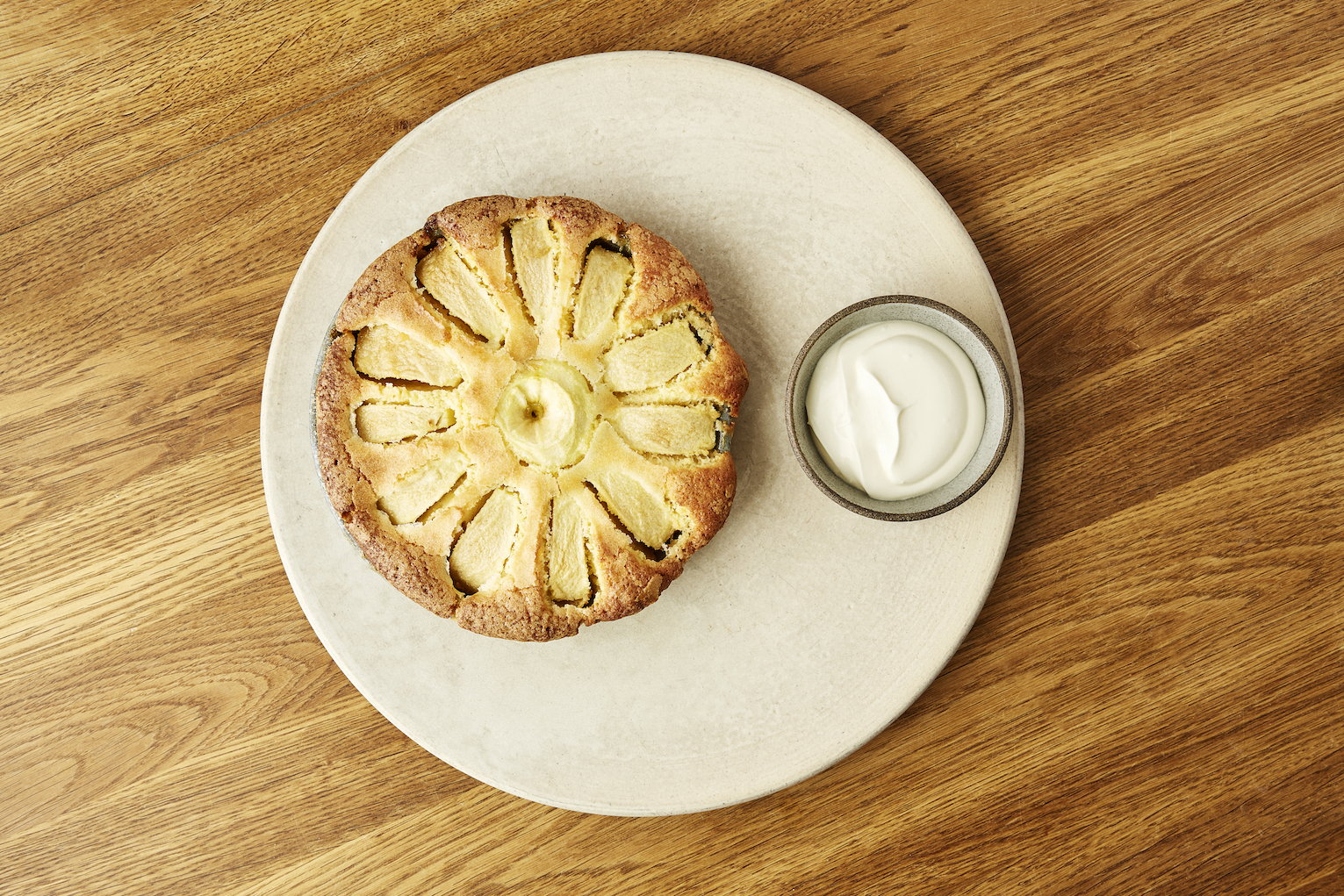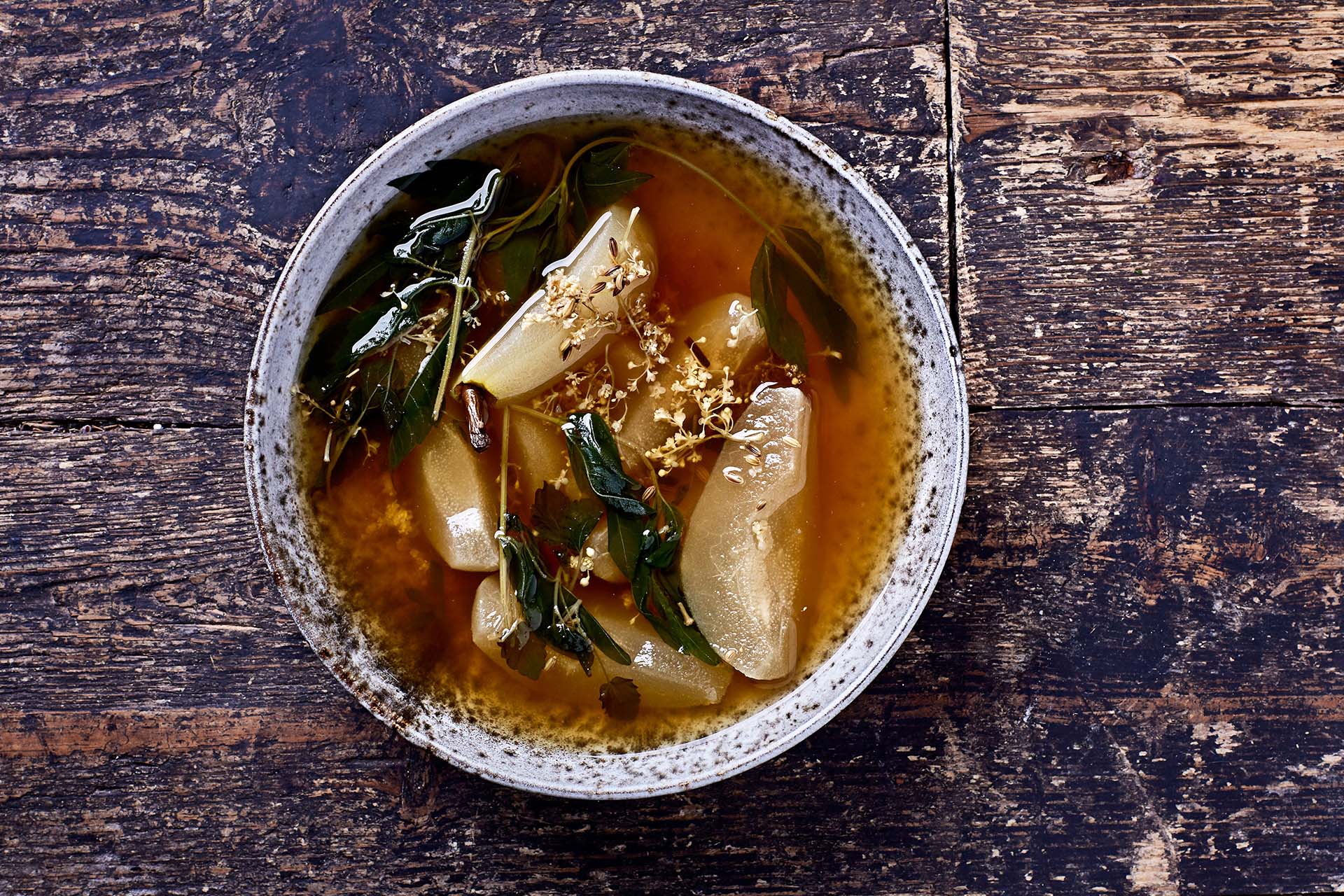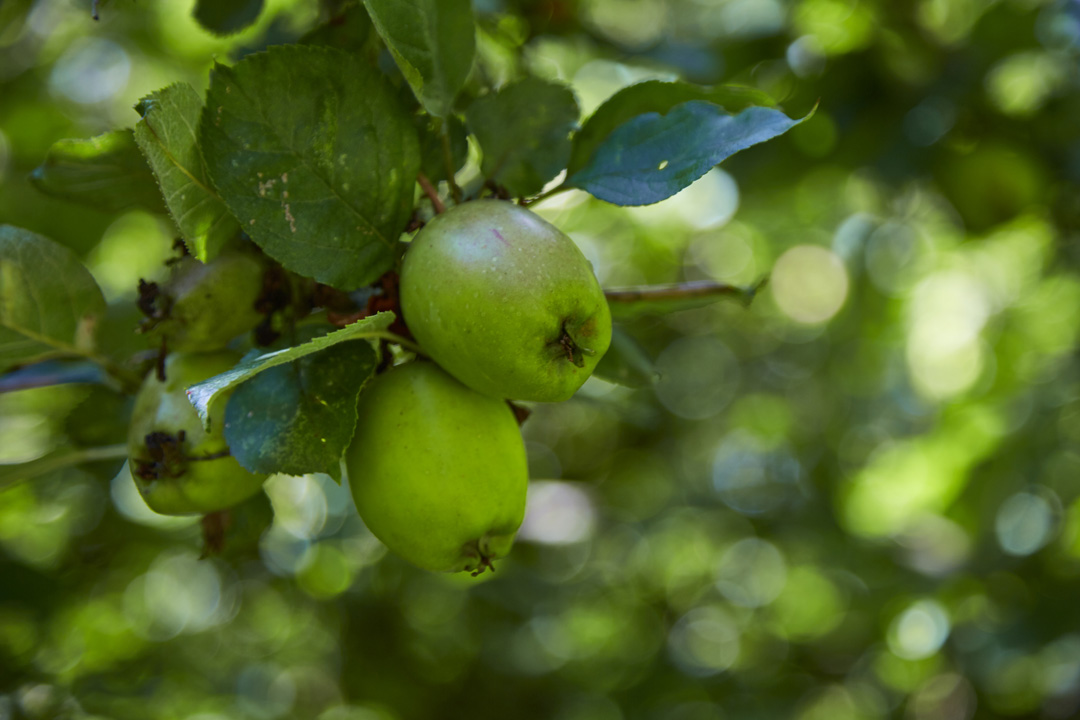
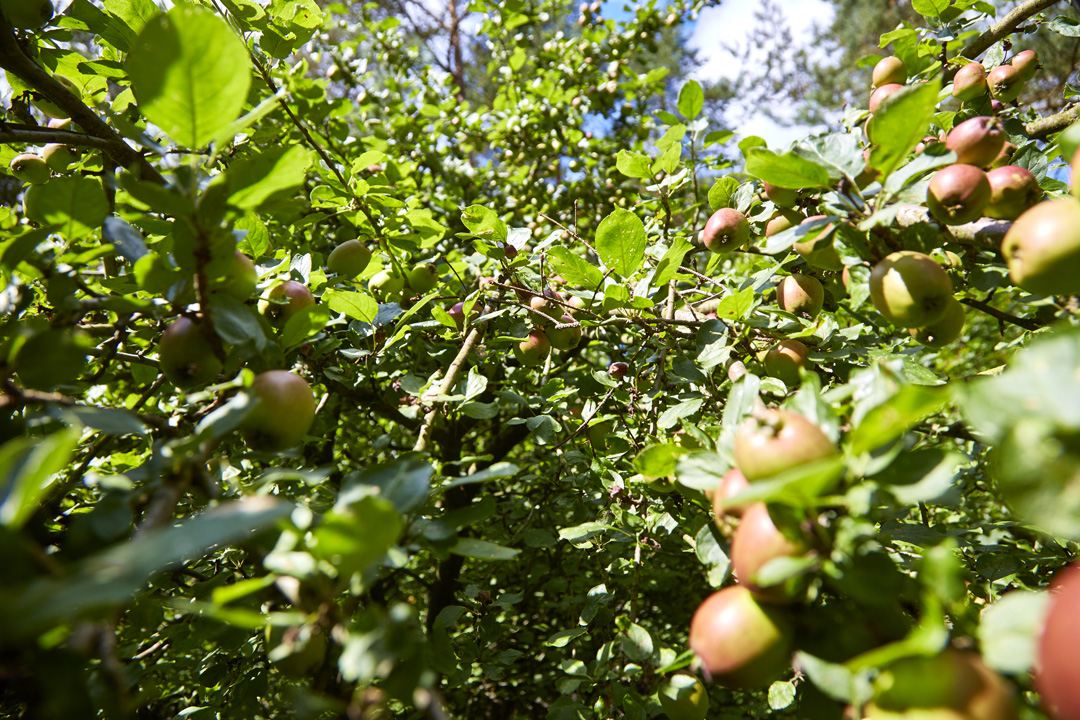
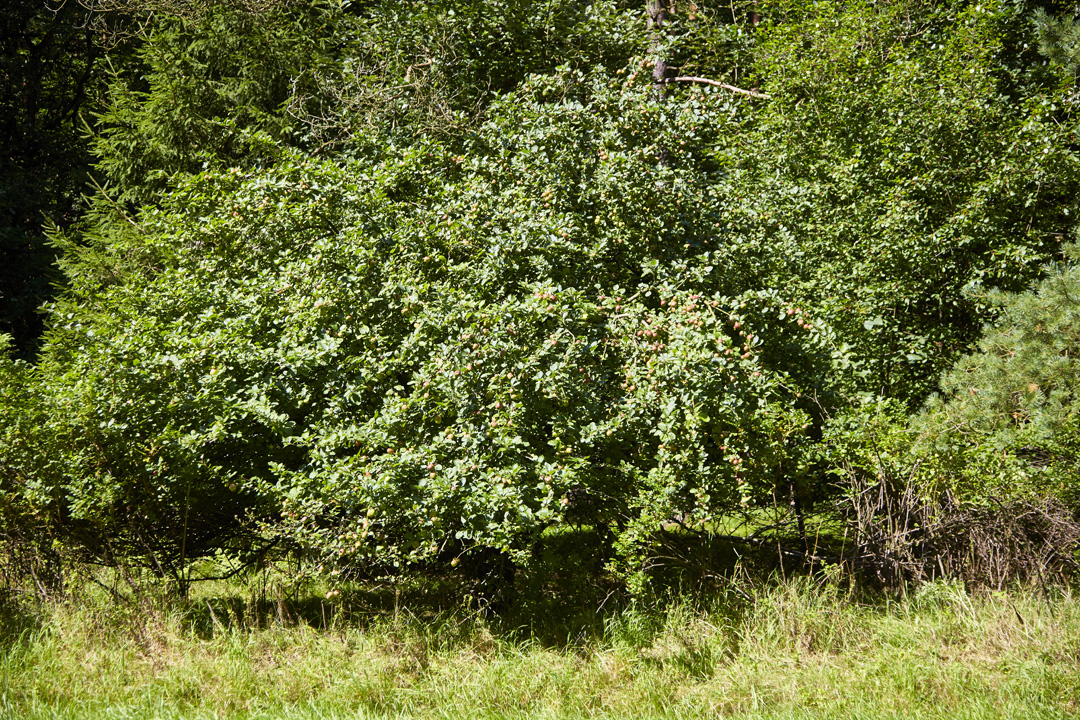
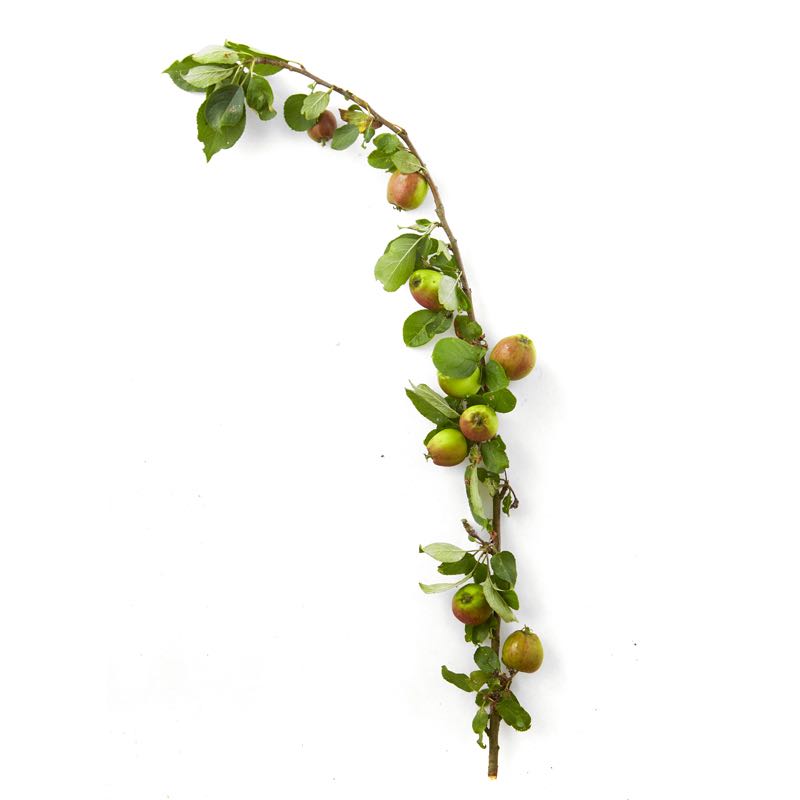
Wild apple
Wild apple is a collective name for all of the incredibly interesting, nearly inedible, and truly delicate apples that grow at random in the forests and pastures of Denmark. They're unnamed apples brought forth by nature itself.
-
Where to Find It
The apple doesn't fall far from the tree, but the seeds can very well travel a bit farther before taking root. You may be lucky enough to happen upon wild apples any place where apple trees can grow—especially where the soil is dark and saturated. They thrive best in bright, open forests and at the edge of woods, in hedges, copses, and pastures.
Deciduous forests, coniferous forests, towns, hedges. -
When to Find it
Most wild apples are ready for picking around September and October, and some as early as August.
Apples: September, October. -
How to Spot It
Once the seeds from noble, cultivated apple trees are carried away and shoot up as illegitimate children, they become bushes or small trees that bloom in May and June with small, white or pink flowers. Unlike their domesticated relatives, many wild apples are no bigger than three or four centimeters in diameter.
-
How to Pick It
If the apple doesn't easily separate from the branch when tugged, it's not ripe yet. A perfectly picked apple has only a short stem—no leaves or twigs. To find out whether the apple is ripe enough, you can cut it down the middle and look at the seeds. The darker they are, the riper the apple.
Risk of misidentifying the plant
There is no risk of mistaking the plant for another dangerous or undesirable plant. In some cases, however, wild apples may be confused with wild pears.




